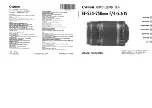
8
Sensor Maintenance and Precaution
When used to control product dosing, it is suggested that the automation system be configured to provide
backup to limit potential product overfeeds, for example by limiting pump size or duration, or by alarming
if the pumping rate exceeds a desired maximum limit.
The ST-730 Series sensor is designed to be easily removed, inspected, and cleaned if required. It is sug-
gested that the ST-730 Series sensor be checked for fouling and cleaned on a monthly basis. Heavily con-
taminated waters may require more frequent cleanings. Cleaner water sources with less contamination
may not require cleaning for several months.
8.1
Methods to Cleaning the ST-730 Series Sensor
Any equipment in contact with industrial cooling systems is subject to many potential foulants and contam-
inants. Our inline sensor cleaning solutions below have been shown to remove most common foulants and
contaminants. A small, soft bristle brush, Q-Tips cotton swab, or soft cloth may be used to safely clean the
sensor housing and the quartz optical sensor channel. These components and more come with a Pyxis Lab
Inline Probe Cleaning Solution Kit
(P/N: SER-01) which can be purchased at our online E-Store
lab.com/product/st-series-probe-cleaning-kit/
Figure 19.
Inline Probe Cleaning Solution Kit
To clean the ST-730 Series sensor, soak the lower half of the sensor in 100 mL inline sensor cleaning solution
for 30 minutes. Rinse the ST-730 Series sensor with distilled water and then check for the flashing blue light
inside the ST-730 Series sensor quartz tube. If the surface is not entirely clean, continue to soak the ST-730
Series sensor for an additional 30 minutes. Use the small, soft bristle brush and Q-Tips cotton swabs as
necessary to remove any remaining contaminants in the ST-730 Series sensor quartz tube.
ST-730 Series User Manual
| +1 (866) 203-8397
16
Содержание 50626
Страница 1: ......


































